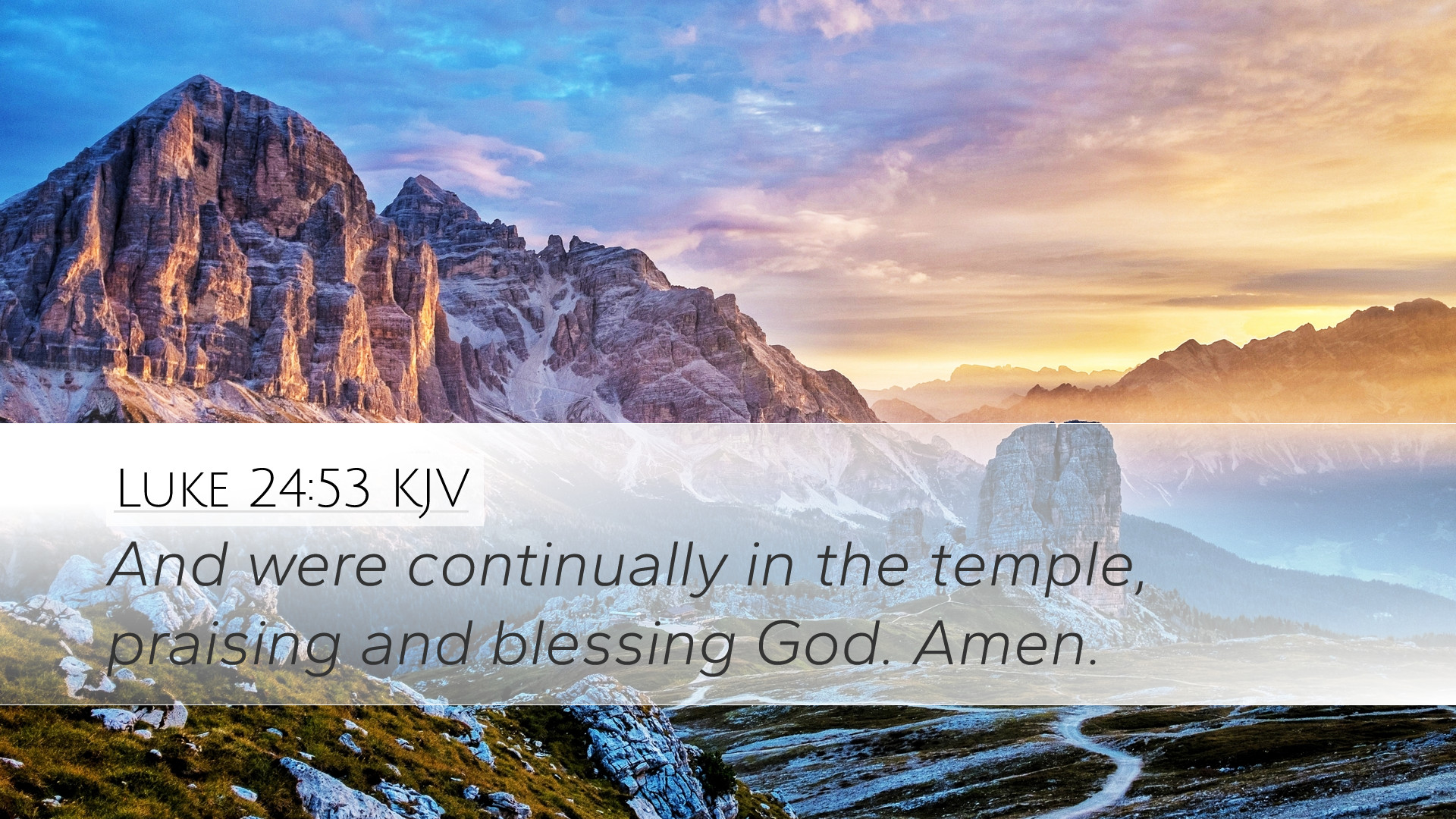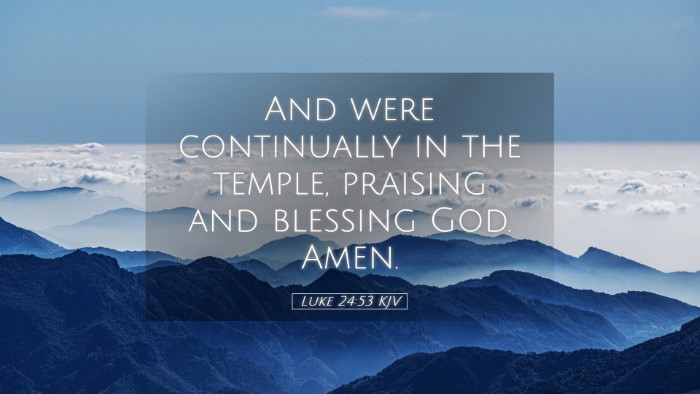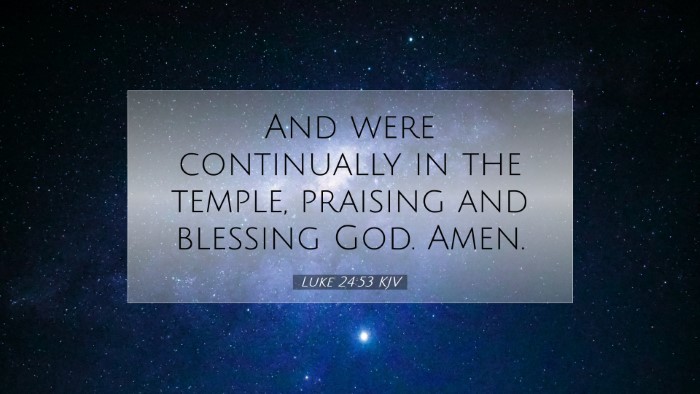Commentary on Luke 24:53
Bible Verse: Luke 24:53 - "And were continually in the temple, praising and blessing God. Amen."
Introduction
Luke 24:53 captures a transformative moment in the early Christian church following the resurrection of Jesus Christ. This verse illustrates the disciples' response to witnessing the ascension of Christ and the fulfillment of His promises. Such a response not only signifies their understood mission but highlights their devotion and commitment to worship.
Context and Background
This passage occurs at the conclusion of the Gospel of Luke, a crucial point where the author provides closure on Jesus' earthly ministry. Following His resurrection, Jesus appeared to His disciples, providing them with final instructions and the promise of the Holy Spirit. This verse acts as a summary of the disciples' immediate response to the ascension, which can be seen as a transition from the earthly ministry of Jesus to the establishment of the church.
Thematic Elements
- Worship and Praise: The act of "praising and blessing God" underscores the theme of worship as central to the Christian faith. Both Matthew Henry and Adam Clarke emphasize that the source of the disciples' joy stemmed from their acknowledgment of God’s sovereignty and the victory secured through Jesus' resurrection.
- Continual Devotion: Their "continual" presence in the temple reflects an important aspect of their new identity as followers of Christ. Albert Barnes notes the significance of gathering for worship and teaching, suggesting a lifestyle marked by communal worship that would later characterize the early church.
- Response to Revelation: The disciples’ active engagement in worship following the ascension indicates a profound transformation. They recognized the risen Lord and responded in faith, moving from despair to hope. This reaction highlights the essential Christian principle of responding to God’s actions in worship.
Insights from Public Domain Commentaries
1. Matthew Henry's Commentary
Matthew Henry describes this passage as a highlight of the disciples' joy and conviction. He draws attention to the "praising and blessing God" as an act of declaration concerning their faith. For Henry, this verse indicates not only their grateful response but also an understanding of their role in God's redemptive plan.
2. Adam Clarke's Commentary
Adam Clarke points to the importance of the temple setting, interpreting it as a significant location for worship and community gathering. He emphasizes that the disciples' continuous presence in the temple reflects their understanding of the necessity for spiritual development and fellowship. Clarke also connects this time of worship to the empowerment they would soon receive through the Holy Spirit at Pentecost.
3. Albert Barnes' Commentary
Albert Barnes emphasizes the emotion behind the disciples' actions. He suggests that this response is an overflow of gratitude and recognition of who Jesus is. For Barnes, this verse illustrates a model for modern believers, inviting them to embody a life of worship in response to God's grace and mercy.
Application for Today
This passage challenges contemporary believers—pastors, students, theologians, and scholars—to consider how they respond to the realities of Jesus’ resurrection and ascension. It calls the church to a lifestyle marked by devotion, continual worship, and active participation in the life of the faith community. Here are some pertinent applications drawn from the commentary insights:
- Commitment to Worship: The early church's commitment to worship serves as a model for modern congregations. Regular gathering, praising God, and maintaining a posture of worship should remain central to the life of every believer.
- Active Participation in Community: Engaging with the church community is vital. This passage encourages believers to invest in the life of the church, fostering relationships that encourage growth and spiritual vitality.
- Response to God's Actions: Recognizing what God has done and continues to do should lead to a response of gratitude and worship. Cultivating a heart that responds to God with praise can deepen one's faith journey.
Conclusion
Luke 24:53 offers profound insights into the nature of the early Christian response to the resurrection. In combining the reflections from esteemed commentators, we see a thriving early church characterized by worship, unity, and active faith. As pilgrims on this spiritual journey, may we continually seek to embody these principles, ensuring that our lives resonate with the truth of the Gospel.


